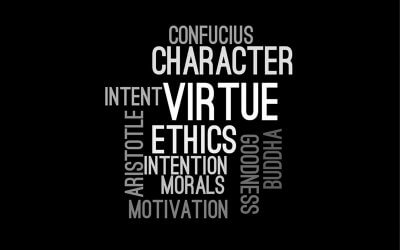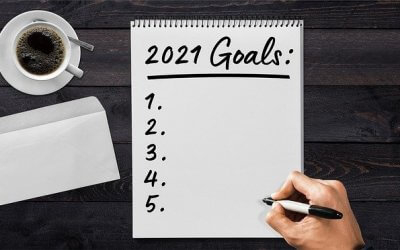Most hiring is wrong; businesses have a 54 percent success rate
How successful are we at recruitment? According to the Harvard Business Review, 80 percent of employee turnover stems from bad hiring decisions. A Brandon-Hall research brief found 95 percent of employers surveyed admitted to making hiring mistakes by recruiting the wrong people each year.
According to a 2015 Leadership IQ study, 46 percent of hires are considered failures by the time they reach the 18-month mark. A 54% success rate! Would you accept that from any other area of your business? Not only do we have a 54% success rate, but the costs of a bad hire are huge. Google searches give estimates as follows:
-
The cost of a bad hire can reach up to 30% of the employee’s first-year earnings — US Department of Labor
-
Bad hires cost $240,000 in expenses related to hiring, compensation, and retention — The Undercover Recruiter
-
74% of companies who admit they’ve hired the wrong person for a position lost an average of $14,900 for each lousy hire — CareerBuilder
Since all businesses need employees, why are businesses bad at it? Why do they tolerate this inferior performance, as they all have to face the repercussions of poor hires?
Every business leader understands the negative consequences of a bad hire. Hiring a bad fit for your team can disrupt team morale, decreased productivity, and hurt customer service. Also, there are those terrible hires, which are great, but the company puts them off so much they leave.
But the most successful businesses have what it takes to ensure a bad hire doesn’t derail their teams.
Disposable Employees
Part of the issue, in my opinion, is that the disposable society has migrated to employees. We tolerate lousy hiring, as we believe we can easily replace them with better employees if they don’t work out. However, this assumption is flawed and is another example of hubris.
Because of this faulty assumption, we don’t bother to put in place processes for recruiting, interviewing, and on-boarding to ensure that we are not undertaking lousy hiring practices.
Many will say, but we have processes, and indeed, you do. However, are they useful? It goes to your culture. If your firm has a culture of continuous improvement, then you be continuously looking at your hiring practices and making changes to improve the results. If you don’t have a Kaizen culture, you should, but, just because you have a process, doesn’t mean it is an efficient process. You need to examine that process and then start measuring the results to see where it can be improved.
Direct Costs
-
Hiring Costs
-
Compensation Costs
-
Severance Costs
Indirect Costs
-
Support Costs
-
Cost of Poor Performance
-
Loss of Poor Subordinate / Department Morale
-
Value of Bad image in the Workforce
If you want to determine the cost to you from a bad hire, click here for a model that will help you estimate the costs of a bad hire.
The second reason is the damage to morale among the employees that stay. They might think the person was a good hire, and if they left, the remaining employees might question why they are still around.
So Hiring is a Process
Like so many things in business, hiring is a process. I have heard that if a company establishes a good process and sticks with it, it can move that hiring success rate from 50% to 80-90%. If we stick to the process and work to improve it, we should get better results. If we “wing it” and don’t track the success, then we have no idea what is working and what isn’t or how we are performing.
To avoid keeping bad hires on your team for long, have a strategy in place to continuously hire–especially for roles you know will open up throughout the year. It’ll help you quickly replace bad hires and build a network of talent to staff up as your team grows.
Keep jobs posted on your career site–even if you don’t have an immediate opening. If a strong candidate comes along, you can offer an informational interview. If the meeting goes well, you might even decide to hire the candidate before you have an immediate need. If not, you’ll have a pool of talent to tap into when you need to make an urgent hire, i.e., when you let go of a bad hire or suddenly experience business growth.
Hiring the right employee is much more important than simply filling a seat.
I have identified the hiring steps to be:
The Job Advertisement
From a talk I heard many years ago, I took away that ads, in general, do not attract good people, more like the bottom third. Most job specifications define the minimum standards; basically, we end up with the tallest pigmy. Good people and Millennials want to know what I am going to learn and what is the job going to do for me.
You have to inform candidates of the following:
-
What is the situation or problem?
-
What are the main obstacles the employee will encounter to be successful?
-
What actions need to be taken to accomplish the problem?
-
What are the measurable, quantifiable results required that define success?
Instead, what we state is the following:
-
Such and Such Industry experience
-
XYZ Technical Degree / Certification
-
ABC Skills and knowledge
-
D E & F Behaviors and attitude
-
Minim
um of T Years of experience
If this hasn’t bored you yet, it should have. No “A” player is excited over this! You haven’t sold them. What we should be saying is:
-
Fast-growing company in fast /new/challenging sector
-
Opportunity to part of a successful team to create a market-leading organization
-
Increase sales by X% and improve margins by y% within T months
-
Build an Indep. Rep. Channel in X within Y days
-
Implement sales forecasting and pipeline management with Z months
-
Revamp all sales collateral within Q months.
The Search
Recruiters are expensive, and I hear they are often sending the same people that are responding to ads on Monster and Indeed. Instead, reach out to your network, customers, suppliers, advisers, etc. Provide them a copy of your job description and ask if they know someone who would be interested and who would fit within your culture.
The Sorting
A lot of HR departments have turned to technology to help them with recruitment. They are using scanners to look for words and phrases on a resume that meet their job description. However, given that they are using the failed advertisement, it makes matters worse as it excludes those that would be great hires but don’t fit with what the computer is seeking. Remember, all these algorithms are programmed and have biases, but we don’t always know the preference. Unfortunately, reviewing resumes needs a human eye until computers get much better.
I recently heard a story of someone who was looking for Venture Capital funding. They sent an email to a VC firm that had a video of them singing “Call Me Maybe” with revised wording. The effect worked. The VC was intrigued and asked to meet them. Your automated system will not take these people in and could reject some great possible hires.
The Interviewing
We have all heard of those interview questions to determine how an employee thinks. However, interviewing is more than a few tricky questions, not to say you should give up on them. Consider the interview an audition rather than an interview.
Experience
If you need a welder, get the applicant to do some welding. If you need an Operations manager get them to do a presentation on what they would do to solve the “S” in Soar. If they have to code, make them code something that doesn’t necessarily require the language knowledge but the thinking of how to structure the problem for coding.
Rather than ask them about the experience on their resume, which they have rehearsed, get them to whiteboard the entire project and layout everyone’s role and contribution. If an applicant just had a small part, they will not be able to do it.
Cultural Fit
Cultural fit is talked about continuously but still gets little application. Primarily I would put this down to the fact that many employees don’t know what their culture is. A client of mine recently when around their company, which has 50 employees, and offered each one $100 if they could say what the culture was. Only one employee could, and to my client’s chagrin, printed all over the office, is the corporate culture. The message is only in words and not carried into behaviors.
-
At Zappos, an applicant who is not a local gets a free ride from the airport to Zappos’ Las Vegas headquarters. In addition to being a convenience, it is also a subtle part of the application process. During the rides, the van driver is paying attention to how the applicants carry themselves and treat them, regardless of whether their travel was pleasant or not. After a full day that includes a tour and multiple interviews, a recruiter checks in with the driver to get their impression. Hsieh said in an interview with the Wall Street Journal in 2013, “It doesn’t matter how well the day of interviews went, if our shuttle driver wasn’t treated well, then we won’t hire that person.”
-
Elon Musk, initially, interviewed every employee last to check for cultural fit and asked employees to write a letter saying why they wished to work for SpaceX. Former SpaceX talent director Dolly Singh said that Musk told her to find the single best person on the planet for any given job, no matter the role. When SpaceX built a yogurt stand in its headquarters, Musk instructed her, “Go to Pinkberry and find me the employee of the month.” Musk also looks for candidates with a positive attitude. He also considers whether co-workers would like working with them–what he refers to as a strict “no-assholes policy.” Musk asked her, “what makes you the right person to build my company? Why should I trust you?”
Due to the failings of the interview, some people have started to use unorthodox methods to determine a candidate’s potential, i.e.
-
playing table tennis to discern their level of intensity and risk-taking,
-
have candidates drive the interviewer’s car to gauge their multitasking skills, or
-
explaining why people shouldn’t work for the company to prompts more honest conversations
The Measurement
What about after the interview, how do you compare the candidates? Most people write down whether they liked them or not, and do think they are a good fit, but this loses the focus. I like using a Decision Matrix to select the best candidate. Click here on how to use a Decision Matrix.
What if You Couldn’t Fire
An e-commerce company, Next Jump, promises never to fire anyone. A company that will not fire is forced to hire slowly and very deliberately. Jay Forte says this type of hiring model (whether or not you choose to offer lifetime employment) is something all companies should consider. “When we choose wisely about who we bring into our organizations, we need to be aware we are making a lifetime decision,” he says. “Not everyone fits in the organization. Therefore, initially choosing wisely is critical. Once chosen, it is right to think that employees will spend all of their careers with the organization – this completely changes how we think about our people.”
Why Should I Work for You?
Like them or hate them, millennials are the largest share of the workforce, so we better figure out how to interact with them. Because of the way they look at the jobs, unlike the baby boomers, they will not accept, “You should be happy I am giving you a job.” They saw what happened in the Great Recession and that they are disposable, so their attitude is “I work for you, you offer me something more than money – satisfaction, career advancement, training, etc.”
I have posed the following question to a lot of CEOs, “You have the perfect candidate in front of you interviewing for a job. They have everything you need, skills, experience, cultural fit, and attitude. You are about to make the offer, and they look at you and say, ‘Why should I work for you?’” None of the CEOs have a great answer. I get responses along the lines of:
-
We’re a great company.
-
There are great opportunities for advancement at XYZ.
-
We have a great workforce.
These sound good, but if this person is interviewing with several companies, all the companies are probably saying the same thing. You know none of the other companies are saying:
-
We are an awful company
-
We are offering a dead-end job in a dead-end company
-
The people here are terrible and will never go anywhere because they are so bad.
So how do you distinguish yourself from the pack? You better be able to answer this question well and authentically to get those “A” players.
Onboarding vs. Waterboarding
Over 70 percent of employees regret their decision after the first day of a new job! No one I have ever met has started work at a new company, not excited about the opportunity and the change for a fresh start with upside. If by the end of the day, 70 percent think they made a mistake, that should tell you how fantastic most onboarding processes are. I experienced such a great onboarding experience many years ago as follows:
-
I arrived and sent to HR to fill out reams of paperwork (they could have sent them to my house, and I could have come with them completed).
-
Taken to security to get my badge – took an hour
-
Brought to my desk to find out that my boss was away on business for the week. No one knew what I was supposed to do, but there were four binders on the desk full of information on some prior deals that I was supposed to read.
-
As I was during my “probation period,” my computer could not be connected to the network, so all files were transferred on disks.
-
I was not allowed to order business cards until my probation had ended, even though I was heading to Asia for a large conference the following week.
I was one of the seventy percent, which was thinking, “What the hell have I done, why did I move.”
By the time the probation period is over, the marriage is over, and the employee no longer loves the company. They have checked out.
I believe it was Cameron Herold who said that his philosophy was to celebrate the arrival of a new employee on their first day. The new employee would be asked to bring their Bucket List. The company would commit to helping the employee realize one item on their Bucket List during their first year. Helping didn’t mean paying for it, but rather seeing how the company could make it possible. People value experiences over money, and if you did this for your employees, they would appreciate you much more than any bonus you can give them.
Finally, onboarding doesn’t end on the first day, but it continues for more than the first year with regular check-ins. The check-ins are to:
-
reinforce that the employee knows what you expected of them,
-
they have the resources that they need to do the job;
-
they understand the company’s culture and values and are living them.
Good luck recruiting, and may your success rate increase.
© 2019 Marc Borrelli All Rights Reserved
Recent Posts
The “Flaw of Averages” Causes Havoc for Businesses
Discover how understanding the limitations of averages and embracing probabilistic thinking can improve decision-making and risk management in business.
What is Your Strategy, In a Sentence?
If you are banking on the vaccine returning us all to “normal” quite quickly, in the famous words of Dr. Akande, “Hope is not a strategy.” Your organization should be preparing a well-defined strategy for 2021 and beyond. Once you have this strategy, the ultimate question: can you clearly articulate it in one sentence? Distilling your strategy into a single sentence is a powerful tool, both for your legacy and your team effectiveness. Not sure where to start? I offer a plug-in formula to set up your strategy sentence.
Character Matters
“It’s easier to hold to your principles 100% of the time than it is to hold to them 98% of the time.” — Clayton Christiansen. I have often written about the importance of a company’s Core Values. That’s because no matter what words you may have chosen as values, your organization’s Core Values are on display in how leadership and employees actually behave. As I’ve said before, how you have acted in the last twelve months will define your career for the next decade. Your character, and your company’s character, matters.
New Year’s Resolutions, Once More Unto the Breach
The holidays have been even quieter than normal, which has given me plenty of time to reflect on my New Year’s resolutions. Looking at 2021, I decided to use a completely new approach to lay out my goals. The result of my new approach? A highly-detailed, accountable, actually achievable plan for the next year (I think). Wondering what this process looks like?
To Vaccinate or Not to Vaccinate, that is the Question
What do your employees, peers, and leadership team think of the COVID-19 vaccine? Will you require the vaccine, or will you let employees make individual decisions? As a leader, you need to steer the discussion about vaccines in your organization with your Core Values in mind. No matter what strategy your organization takes, the most important factor is going to be how you communicate your decision.
3 Ways You Could be Undermining Your Core Values
Can you answer “Why does your organization exist? What are your core values?” Great. Now, would your latest entry-level employee give a similar answer? How about someone who has been at your company for a year? Your core values give your organization a guiding mission. Many organizations pay this idea lip service, but their true commitment to their core values was tested this year. As we close out 2020, there’s no better time to examine how your organization is approaching your core values.
Are You Prepared for 2021 With Enough Cash?
Companies don’t go bankrupt because they lose money; rather, they run out of cash. Where are we, heading into 2021? First, you can expect your cash to get tighter as we weather the current economic slowdown. Then, with a vaccine on the horizon, you will need to be positioned for growth. If you don’t have the cash you need, have you looked at how you can generate the cash internally? More on how to improve your cash conversion cycle…
Tony Hsieh, a Corporate Culture Icon, RIP
In his work as Zappos CEO and elsewhere, Tony Hsieh believed, and proved, that culture is the most important thing in an organization. According to Hsieh, if you get the culture right, the rest will take of itself. How did Zappos do it? You can take a look at everything from the company’s interview questions, to “The Offer” to leave a position as a new hire. Hsieh believed that a company’s brand is just a reflection of the culture, and his legacy is felt across so many industries.
CEO, Try Thy Hiring System
How does your company hire? I’ve seen the good, the bad, and the surprisingly ugly hiring processes in my career. From the HR email mix-ups to the interviewer watching the World Series while I responded to his questions, I’ve learned that you can tell a lot about an organization simply by examining the hiring experience. Are you chasing away the kind of people you need at your company?
What is Leadership?
What is it, exactly, that great leaders do? There are plenty of overused adages about “leadership” in business. It’s worth examining the tropes around leadership, plus the traits of the leaders who actually leave a mark. Great leaders are forged through adversity, and they leave a legacy. What does that look like in your organization?












Nice post. I learn something more challenging on different blogs everyday. It will always be stimulating to read content from other writers and practice a little something from their store. I’d prefer to use some with the content on my blog whether you don’t mind. Natually I’ll give you a link on your web blog. Thanks for sharing.
Ikaria Lean Belly Juice is a fast-acting weight loss supplement that is developed to incinerate stubborn fat.
Highly energetic article, I enjoyed that a lot. Will there be a part 2?
Your point of view caught my eye and was very interesting. Thanks. I have a question for you.
I?¦ll right away snatch your rss as I can not in finding your email subscription hyperlink or newsletter service. Do you have any? Kindly allow me understand so that I may just subscribe. Thanks.
Very interesting topic, thanks for putting up.
With havin so much written content do you ever run into any issues of plagorism or copyright infringement? My blog has a lot of unique content I’ve either written myself or outsourced but it appears a lot of it is popping it up all over the internet without my authorization. Do you know any solutions to help protect against content from being stolen? I’d definitely appreciate it.
Sight care is a vision enhancement aid made of eleven carefully curated science-backed supplements to provide overall vision wellness.
I love it when people come together and share opinions, great blog, keep it up.
This is a very good tips especially to those new to blogosphere, brief and accurate information… Thanks for sharing this one. A must read article.
excellent points altogether, you just gained a brand new reader. What would you suggest in regards to your post that you made a few days ago? Any positive?
I like this web site so much, saved to my bookmarks. “American soldiers must be turned into lambs and eating them is tolerated.” by Muammar Qaddafi.
Greetings! Very helpful advice on this article! It is the little changes that make the biggest changes. Thanks a lot for sharing!
Thank you a lot for providing individuals with such a splendid possiblity to read from here. It’s usually so pleasing plus full of a great time for me personally and my office co-workers to search your site at the least three times every week to learn the latest things you have. And definitely, we are at all times fulfilled for the eye-popping tactics you give. Certain 3 facts in this article are unequivocally the very best we have all ever had.
One of the leading academic and scientific-research centers of the Belarus. There are 12 Faculties at the University, 2 scientific and research institutes. Higher education in 35 specialities of the 1st degree of education and 22 specialities.